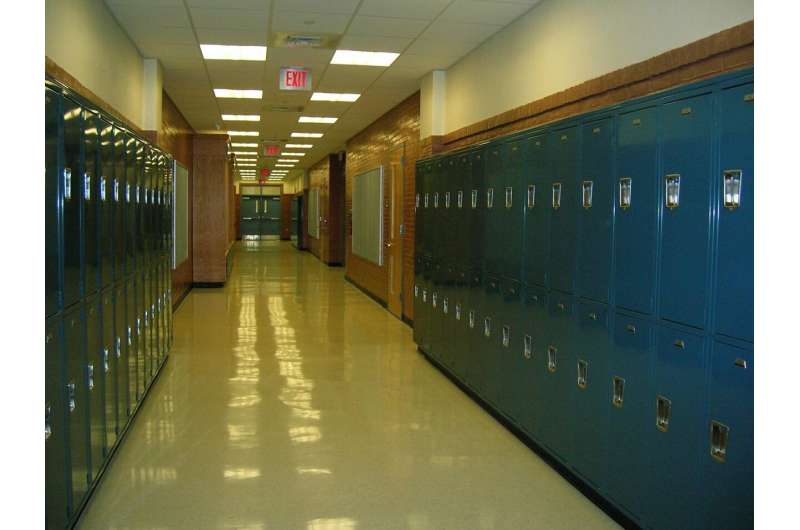School segregation widens racial achievement gaps among Black, white and Hispanic students

New sociological research finds that school segregation continues to widen racial achievement gaps among Black, Hispanic, and white students in U.S. public schools. Analyzing standardized test scores from millions of students, researchers concluded that these gaps grow fastest in school systems where Black and Hispanic students are concentrated in higher-poverty schools than their white peers.
The study, "Is Separate Still Unequal? New Evidence on School Segregation and Racial Academic Achievement Gaps," is in the December 2024 issue of the American Sociological Review.
The research team, led by Sean F. Reardon of Stanford University and Ericka S. Weathers of the University of Pennsylvania, looked at standardized test scores and segregation data from grades 3 through 8 in the 2008–09 through 2018–19 school years from nearly all U.S. public schools. Erin M. Fahle and Demetra Kalogrides, both of Stanford University, and Heewon Jang of the University of Alabama, co-authored the manuscript.
Public schools were desegregated following the U.S. Supreme Court decisions Brown v. Board of Education (1954) and Green v. County School Board of New Kent County (1968). From the 1960s through the 1980s, Black students gained access to more well-resourced schools with higher per-pupil spending and lower student-to-teacher ratios. However, in many regions of the U.S., desegregation was temporary, and segregation has grown in recent years.
The findings of this study underscore that segregation remains a current and persistent driver of educational inequality. The authors conclude that racial segregation is harmful because it concentrates minority students in high-poverty schools, which are, on average, less effective than lower-poverty schools.
Viewed in the broader context of systemic inequality, segregated schools amplify the effects of residential segregation and racial disparities in income, wealth, and early childhood educational opportunities.
The study suggests that without systemic change, these disparities are likely to persist, limiting economic and social mobility for future generations of Black and Hispanic students.
Key Findings:
- Racial achievement gaps grow more quickly in districts where Black and Hispanic students attend higher-poverty schools than their white peers.
- Part of the reason that segregation leads to widening achievement gaps is that segregated education systems concentrate minority students in schools that have fewer experienced and skilled teachers, leading to fewer opportunities for academic success.
- More research is needed to identify all the ways in which segregation affects students, but systemic changes in housing, school policies, and funding are necessary to close these gaps.
The authors conclude that without efforts to address school and residential segregation, racial disparities in education will continue to limit opportunities for Black and Hispanic students, affecting economic and social mobility for generations. More equitable school assignment policies, investment in underfunded schools, and promoting connections between economically dissimilar communities could help mitigate these disparities.
More information: Sean F. Reardon et al, Is Separate Still Unequal? New Evidence on School Segregation and Racial Academic Achievement Gaps, American Sociological Review (2024).
Journal information: American Sociological Review
Provided by American Sociological Association




















